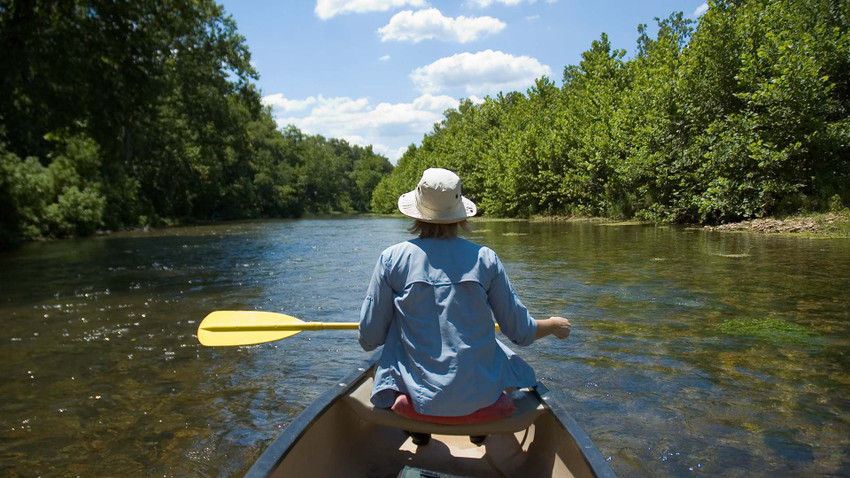Friends of the Boundary Waters Wilderness
Friends of the Boundary Waters Wilderness (BWCA)was founded in 1976. They helped get Minnesota’s million acres Boundary Waters designated as wilderness during the Carter administration. Since then, “the Friends” as they’re called amongst friends, has worked to advocate for and protect the Boundary Waters and its 1100 lakes while inviting visitors to experience its beauty and solitude.
“No one randomly stumbles across the Boundary Waters, says Mike Linnemann, Development and Membership Director. “It’s wilderness. And it’s a lifetime bucket list item for a lot of people. It’s one of the few places in the country where there isn’t cell phone access. You’d think that when you’d bring kids there they would hate it because their phones don’t work. It’s the opposite. By day two, they find it freeing. And I’m talking about 12-13 year olds! They get how restorative nature is without us telling them. You can’t quite get that at a city park or a river near town because you’re always tethered to society. That’s what’s unique out here. It’s wild. You’ll see moose and bobcats, wolf, fox. That experience is one that we want more people to have.”
The group does everything it can to support the communities that surround the Boundary Waters from tackling issues of rural internet and housing, to marketing outfitters, and providing services for visitors. They also run educational programs, bringing underserved kids from Minnesota and beyond to the Boundary Waters to experience its magic.
“We are constantly thinking about how we can help the small towns around the Boundary Waters,” says Linneman. “If they fail, the Boundary Waters fails. When mountain people move to Minnesota or come visit, they don’t know water. We help them feel at home here. And we try to get as many kids into the Boundary Waters as we can. It’s guaranteed to make a lasting impression, and to get those kids excited about nature.”
At any time during the summer season, BWCA has at least 40 Silky Saws in the field.
“We do restoration,” says Linnemann. “When a tree falls on a portage trail, the trails that people carry their canoes on between lakes, we clean it up. We have volunteer crews and youth crews that work on trails, move trees, take dirt out of the lakes and put it back on trails, remove fire grates, and dig new latrines every three years. The number one tool they use to cut up downed trees is Silky Saws. In wilderness, you can’t use a chainsaw. And in our experience over many years, Silkys get the job done.”
Linnemann has a personal Pocketboy that he uses at home in South Minneapolis to keep his yard looking good. He prunes his trees when needed and helps out his neighbors too. He says it’s his “Silky workout.”
Back at the office at BWCA, Linnemann says he spends a lot of time helping the Boundary Waters fight climate change and irrelevance. “We’re actively trying to find kids to come here, says Linneman. “We’re reminding parents it’s a great place to be tourists. We’re working nationally to get the word out. In the Boundary Waters, people can get back to nature as pristine as you can get it. Out here you’re on the edge of Anishinabe lands. You’re following the trails, lakes, and campsites of our First Nations people. You can find petroglyphs in campsites that are thousands of years old.”
The Boundary Waters is also a dark sky sanctuary, and Linnemann says that it’s the darkest place east of the Mississippi in the continental U.S. There, you see the sky in ‘high def,’ the northern lights undulate, and in August, the Perseid Meteor Showers are awe-inspiring.
Each year, BWCA works with a team of Conservative Anabaptists who come to the Boundary to do service work in the Wilderness. FBWW equips eight nineteen-year-olds with Bigboys, PocketBoys, and Katana Boys and sends them into the woods for a month to clean up the trails. “They’re 19; they eat like crazy,” says Linneman. It costs us $12,000 a year just in food!”
The rest of the time, BWCA is pondering ‘How do we get mountain people to realize water is cool!?’
Recently, that means doing their best to block two proposed copper mines in Minnesota which, if created, will dump sulphuric acid into the Boundary Waters.
“Copper mines are pollutive, 100% of the time,” says Linneman. Sulfur plus water equals sulphuric acid. They belong in the desert, not the land of 1000 lakes!”
Learn more about BWCA and their work to both publicize and protect the Boundary Waters Wilderness at friends-bwca.org.

